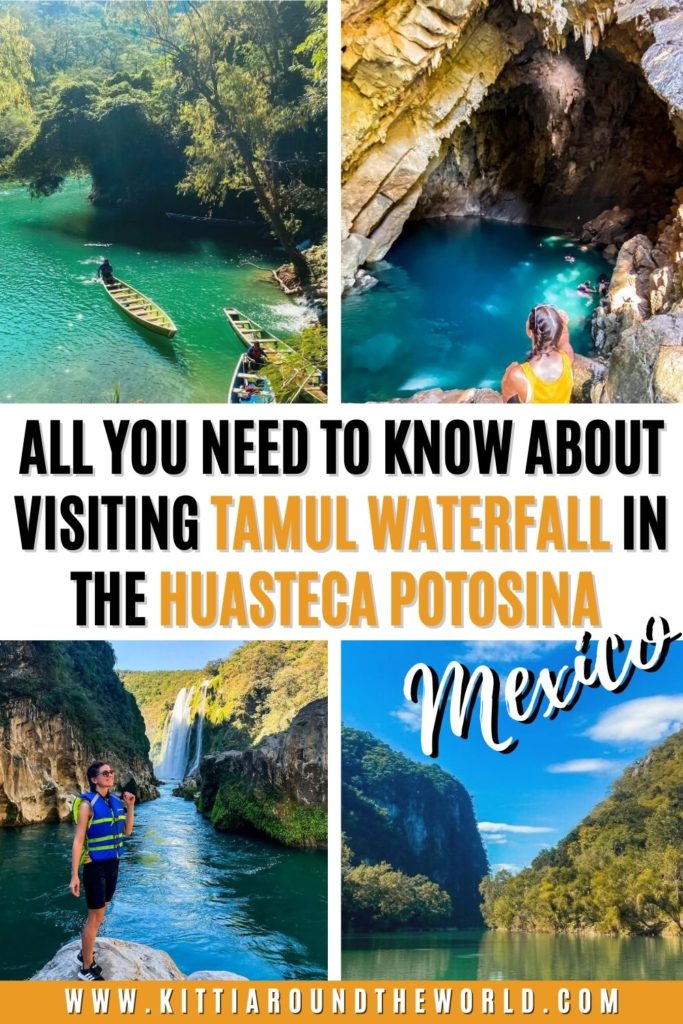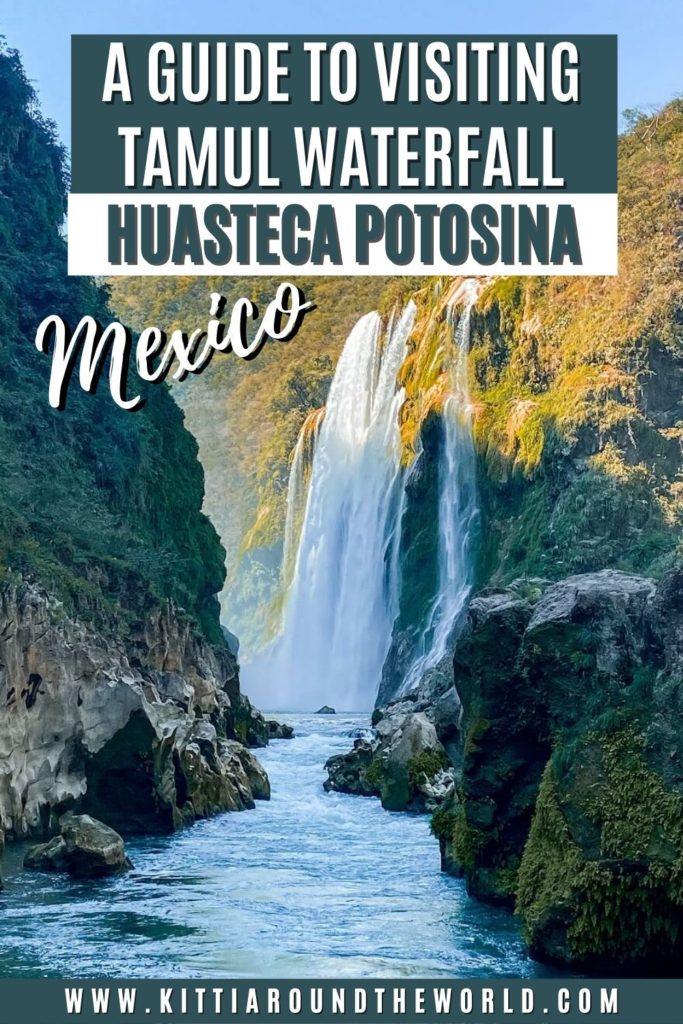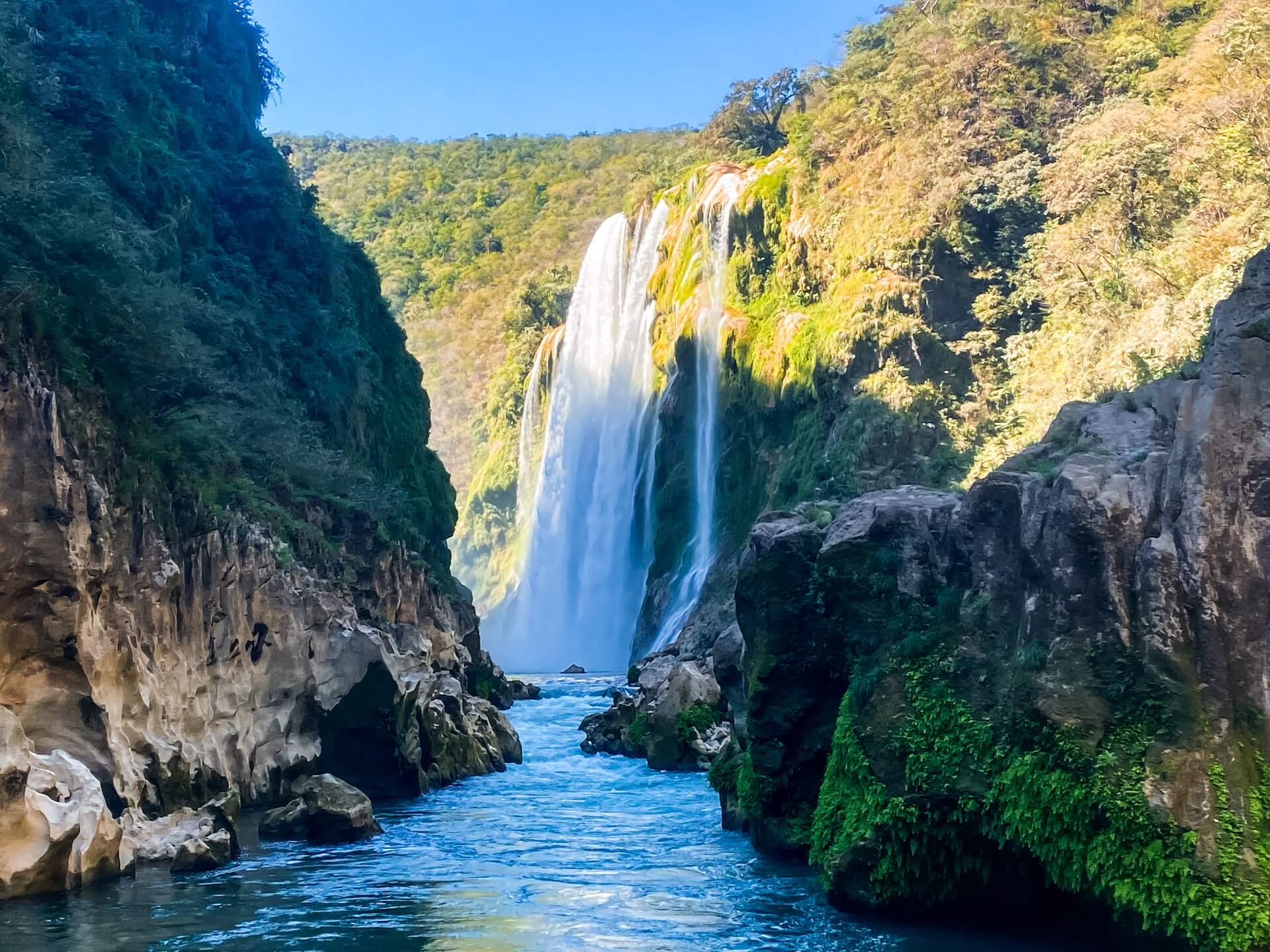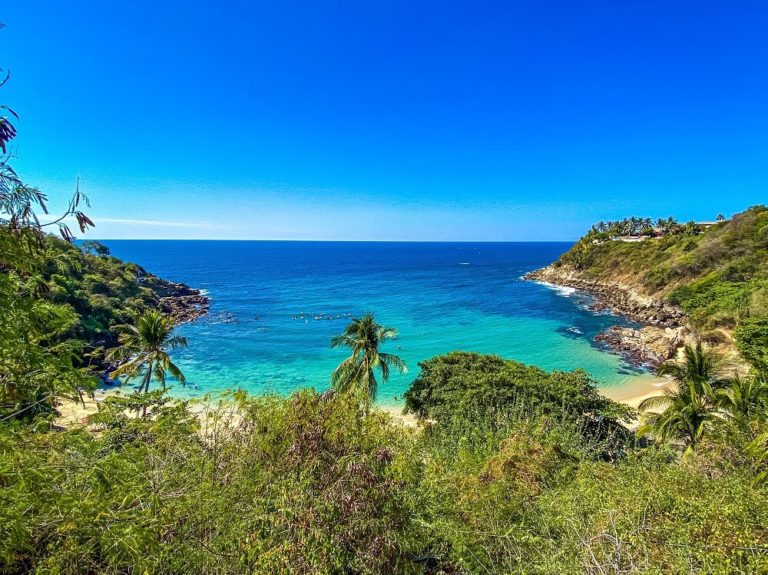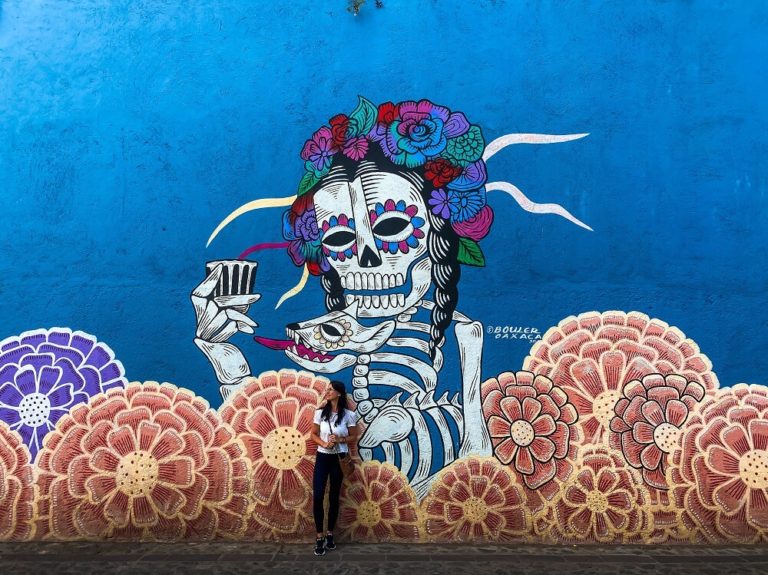A Guide to Visiting Tamul Waterfall (Cascada de Tamul), Huasteca Potosina, Mexico
In this blog post you can read about one of the best ways to visit Tamul Waterfall (Cascada de Tamul) located in the breath-taking Huasteca Potosina region in Mexico.
Below you’ll find a detailed description on what to expect from your visit including information about the waterfall, the tour, top tips and things you should pack for an unforgettable adventure.
For reference, we spent a full week touring around the Huasteca Potosina region during our 3 months in Mexico. We fell in love with this area instantly. Even after completing our full itinerary around Mexico, this region remained our absolute favourite.
Disclosure: This post may contain affiliate links, which means we may receive a small commission if you click a link and purchase something. Clicking these links won’t cost you anything, but it will help us to keep this site up and running! Learn more about our affiliate policy.
Introducing Tamul Waterfall (Cascada de Tamul)
Located to the southwest of Ciudad Valles is the 105m tall Tamul Waterfall which is the tallest waterfall in the state of San Luis Potosi. The waterfall is actually the result of two rivers (Gallinas River and Santa Maria River) merging together which creates the 300m wide waterfall.
The most common way to get close to the waterfall is via the Tampaon River in colourful wooden boats called ‘pangas’. There are no motorboats allowed in order to protect the river which means you’ll have to row with the others in your boat. Along the way you can enjoy the stunning scenery and the beautiful water.
Note – The waterfall will be less impressive during the height of the dry season. Therefore, I suggest visiting at the start of the dry season for a chance to enjoy both the clear blue river and the cascading waterfall.
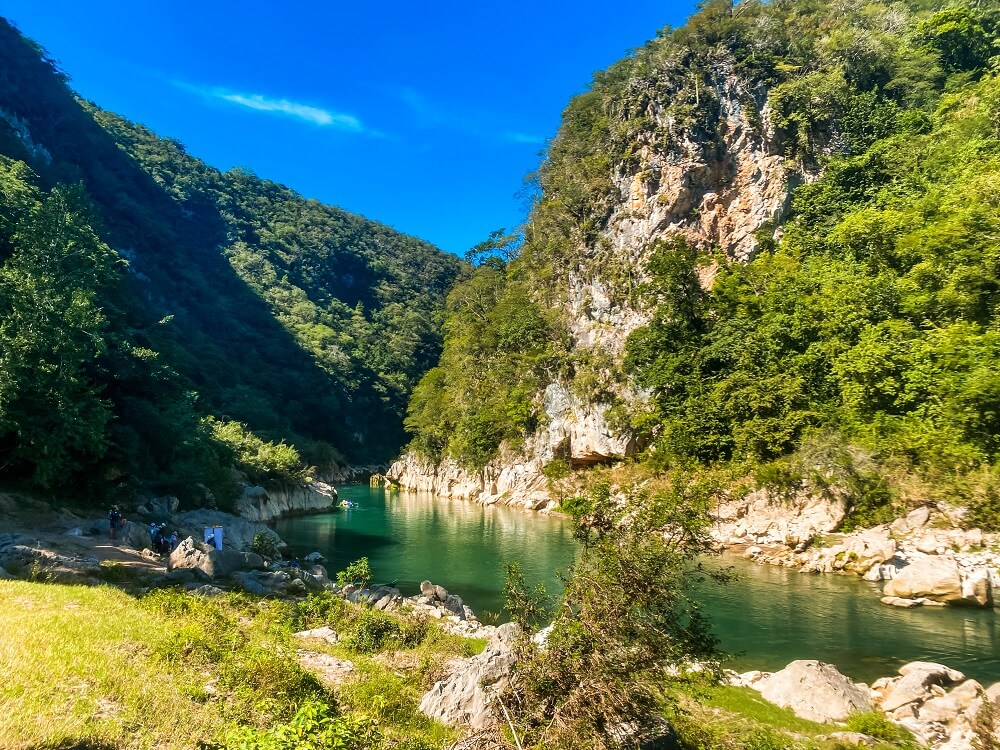
General Tips on Booking a Tour in Mexico
There are many tour operators in this area that organise day-trips to Tamul Waterfall. Depending on your budget and what kind of adventure you’re looking for, make sure to shop around before you commit to a company. Below are a few tips on finding and booking the best tour:
- Your hotel or hostel will definitely have some leaflets of different tour companies so make sure to collect a few of them.
- After collecting a few, search for the companies online and see what tours they offer. I would also check some reviews and their social media sites too.
- Tours in Mexico are normally arranged via WhatsApp. This is great because you can get an immediate response and also use Google Translate to reach out to them in Spanish and then translate their offer. They normally send you details about the tour, what’s included and how much it would cost you.
- Note that their online prices might be different or outdated, so don’t be surprised when they quote a different price.
- If you’re happy with the tour then they will ask you to pay 40-45% of the total cost normally via bank transfer. You’ll have to pay the rest in cash on the day of your tour. Note that tips to your guide are NOT included, so calculate that into your final cost.
- When you book your tour ask if they have English speaking guides available, especially if you don’t speak much Spanish. However, if you’d like to learn some Spanish, then having a Spanish speaking guide is amazing.
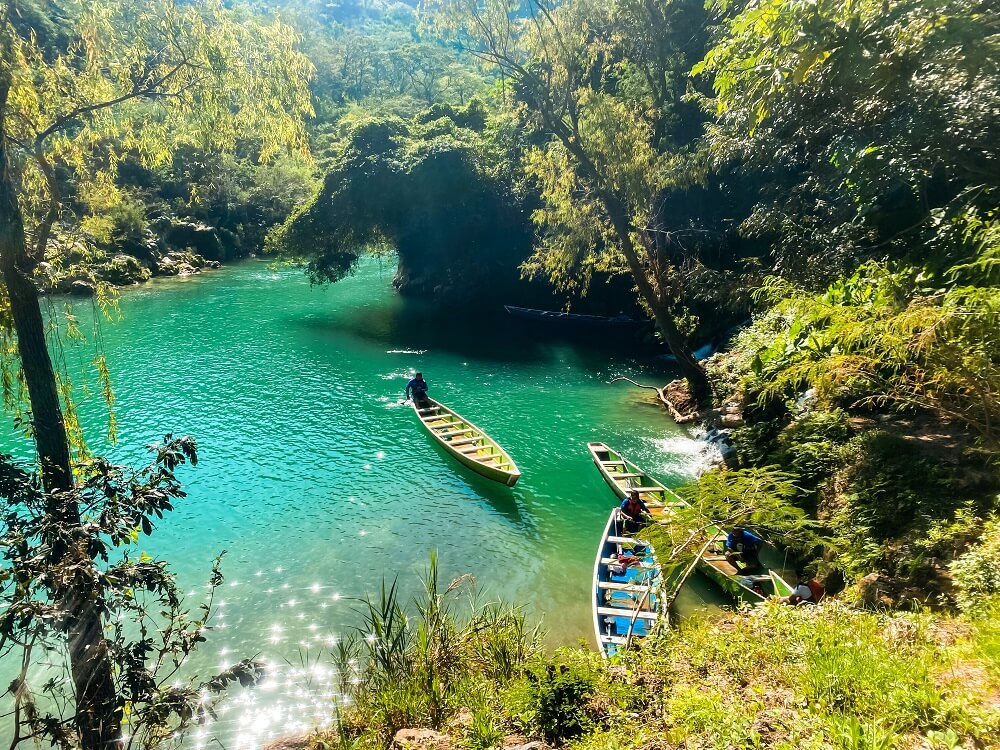
About the Tamul Waterfall Tour
For reference, we booked a tour with Toxil Eco-Aventura and as it turned out we actually got a private tour. This was really amazing because we always feel a bit rushed when going on a big group tour. However, having a private one gave us the opportunity to go at our own pace a little bit more.
This particular company is based in Xilitla, a town that’s located about 2 hours south of Ciudad Valles. The tour included all of our entry fees, door to door transportation and other things such as life jackets. We even had an English speaking guide which gave us the chance to learn more about the Huasteca region.
The only downside was that we didn’t have much time to stop for a proper lunch. Many food places were also closed, so we were limited to a few snacks during the day. Therefore, I recommend bringing some more substantial food with you or ask the tour about food stops in advance.
The cost of the tour was 1,350 MXN per person.
All in all, we really enjoyed the company and would definitely recommend them. However, I still recommend shopping around before you commit to one. One thing is for sure though: whichever tour company you pick, you’re guaranteed an unforgettable day!
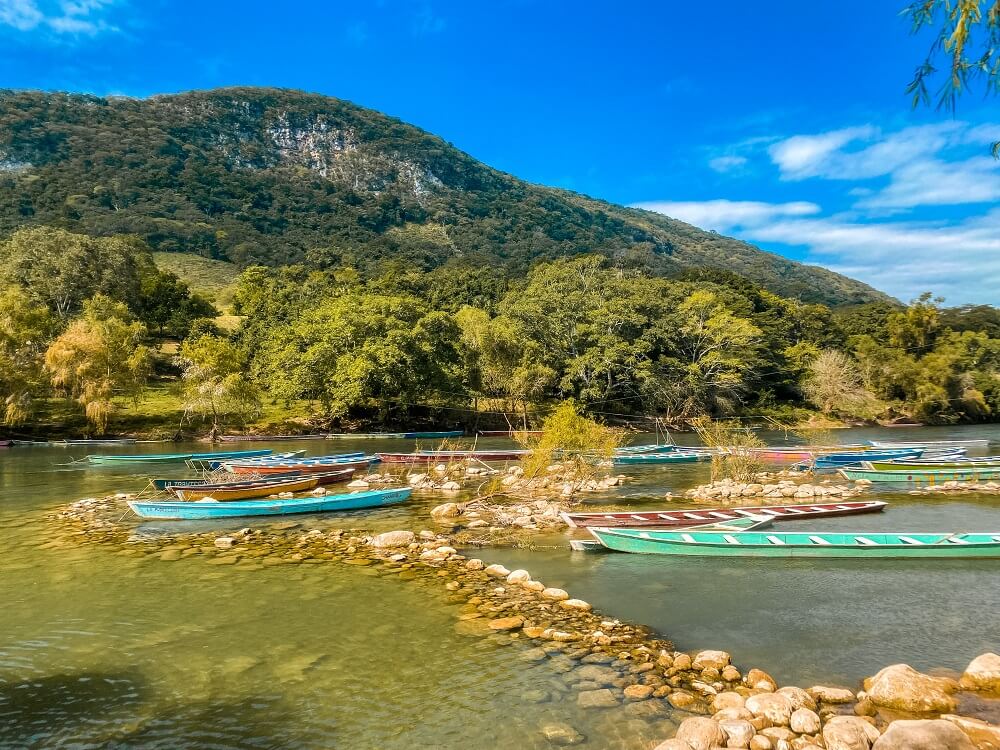
Tamul Waterfall Tour Itinerary
1. Getting to Tamul Waterfall
Normally your tour guide will pick you up from your hotel and will drive you to La Morena where the adventure begins. Depending on traffic, the drive can take between 1.5 to 2 hours from Ciudad Valles.
Once you get to La Morena, I recommend leaving any valuables in the tour guide’s car that you don’t want getting wet. Unless you have a dry bag, only take some essentials such as water, sunglasses, hat, eco-friendly sun-cream, GoPro and your phone in a waterproof case. I also recommend taking some change for the toilet which is normally 5 MXN.
Before you get into one of the colourful ‘Pangas’, you’ll have to walk about 500m down to the river. Along the dirt path you’ll come across a special bridge. According to legend, if you arrive here as a couple and you both walk across the bridge then you’ll soon get married. Needless to say that there were many footprints going around the bridge!
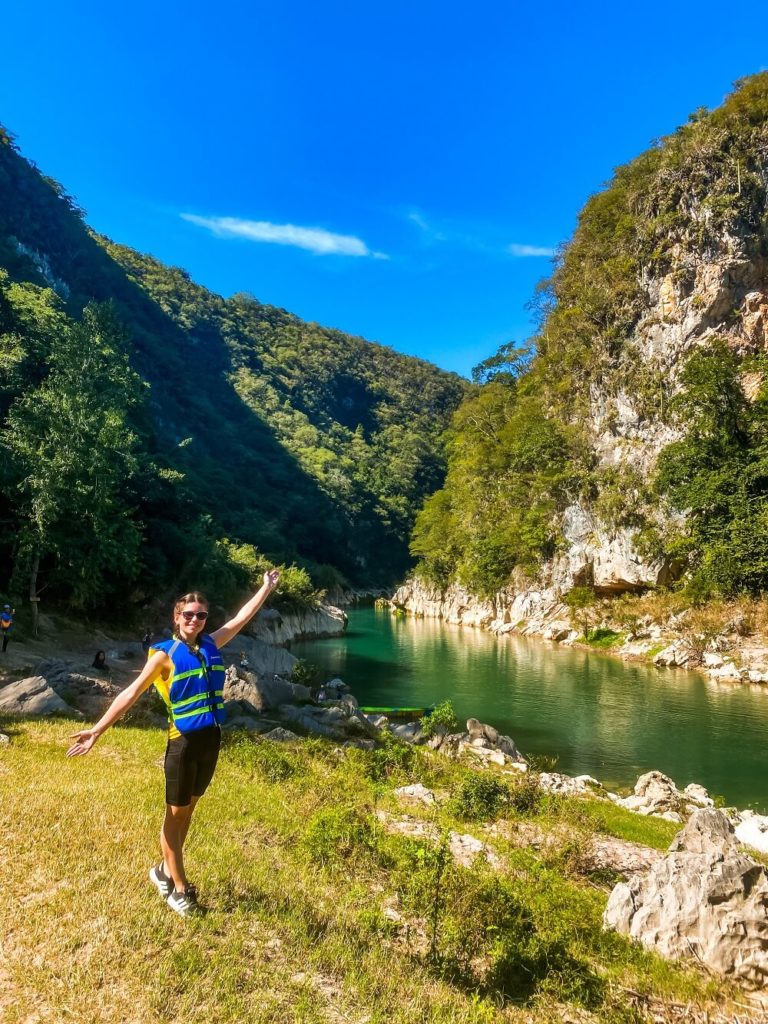
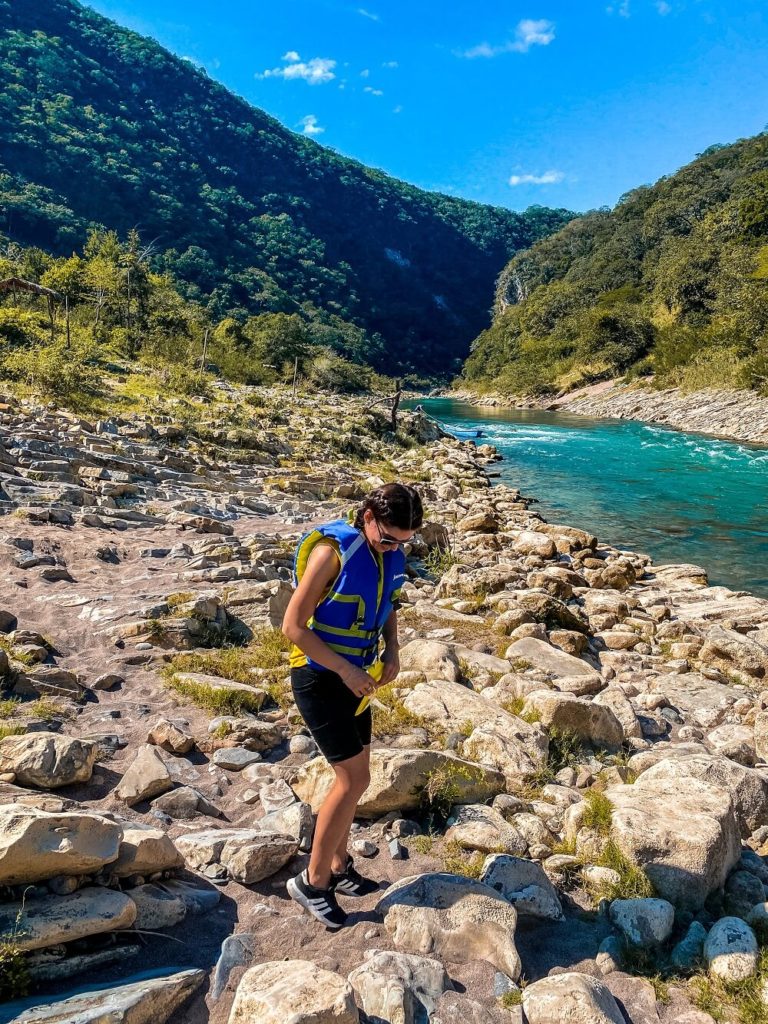
2. Upstream Rowing Along Tampaon River in a Panga
Once you arrive at the dock with all the colourful ‘Pangas’, you’ll be assigned to a boat with your tour guide. As I mentioned above, motor boats are banned to protect the environment so everyone in the boat will have to work together and paddle towards Tamul Waterfall. Each boat will also have a separate guide who helps you to steer and paddle along the river.
To reach the waterfall you’ll have to paddle for a good 45 minutes. The river was actually super calm on the day of our visit so it wasn’t too difficult. We could really enjoy the turquoise green colour of the water, the sounds of the birds and the beautiful scenery that surrounded us. I was personally very happy that motor boats aren’t allowed so we could enjoy the peace and quiet of the place.
About halfway to the waterfall you’ll have to leave the boat and walk a small section past some rapids that you can’t paddle up.
Be prepared – It’s apparently a tradition to have a so-called ‘water fight’ with passing boats. The aim is obviously to get the other boat passengers as wet as possible. They even have buckets in the boats for you to use. Therefore, make sure to have a dry bag or waterproof cases for your electronics because you’re guaranteed to get wet along the way.
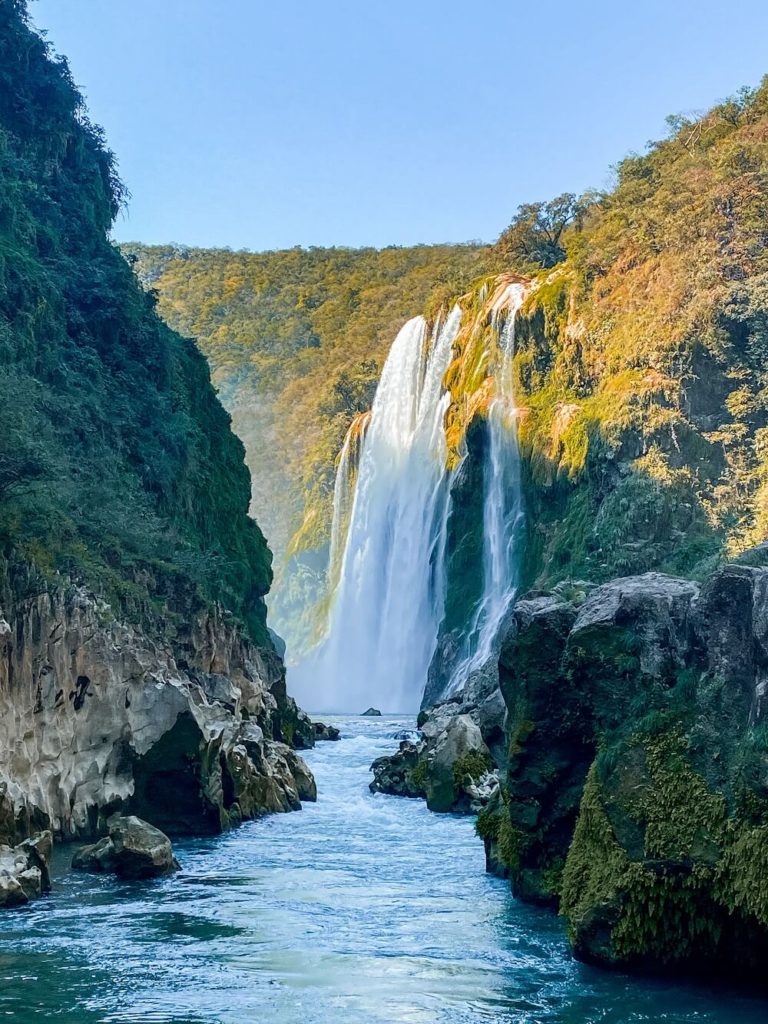

3. Arriving at Tamul Waterfall
Eventually you’ll round a corner and Tamul Waterfall will come into sight. There’s a big rock in the centre of the river which you can climb up to to take some photos. Unfortunately, this is the closest you can get to the waterfall this particular way. This is because the currents are super strong beyond that rock and it would be a bit dangerous to swim or row any closer.
Note – The river can get pretty busy during weekends and holidays. Our tour guide told us that a few days earlier they had had to wait at least 20 minutes before they could climb onto the rock. We visited on a neutral weekday and only saw a handful of other boats which was great.
Top Tip – Since we didn’t have a dry bag, I left my camera behind and could only take photos with my phone. This was fine but obviously if you have a dry bag I highly recommend bringing your camera to be able to capture the waterfall a bit better.
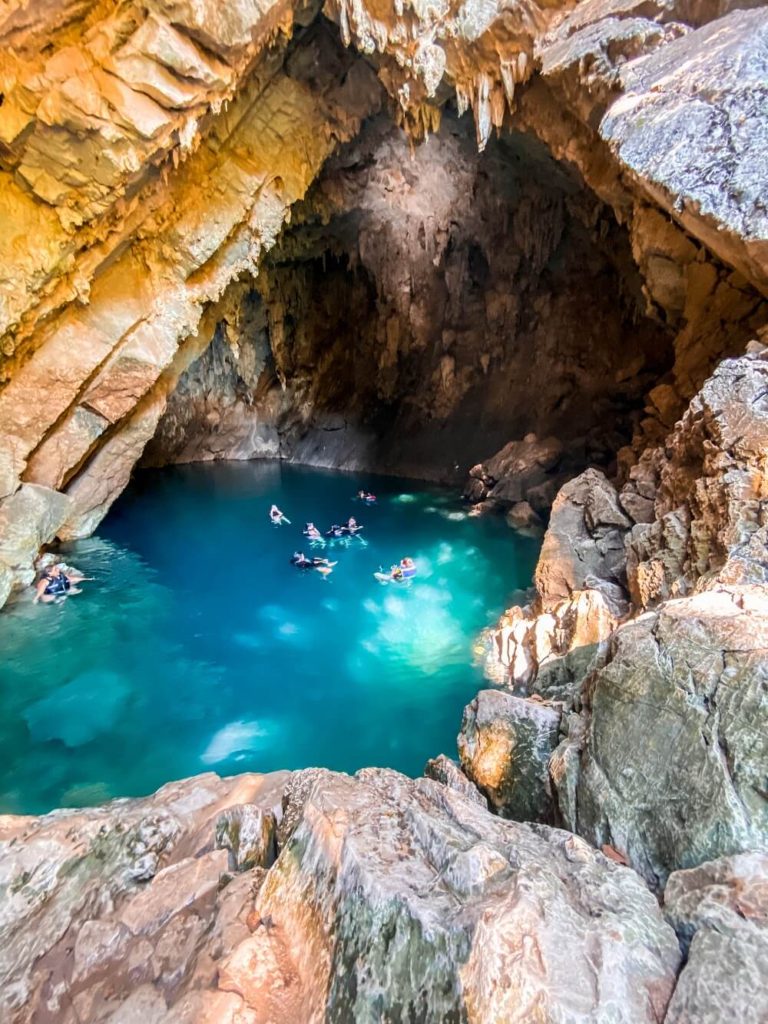

4. Swimming in Cueva del Agua (Water Cave)
Don’t worry, the fun doesn’t end after seeing the waterfall. After rowing a bit further along, you’ll stop to try some fresh water from the river. This is a great opportunity to re-fill your water bottle. Soon after that brief stop you’ll finally have the chance to jump into the turquoise green water and ride the rapids downstream.
The rapids will take you to the next stop which is a beautiful cenote called Cueva del Agua or Water Cave. Here, you’ll have the chance to swim in its sapphire blue coloured water which is once again a nice rest from rowing.
5. Rowing back to the starting point
From the Water Cave, you’ll have to get back into the boat and do a bit more paddling back to the starting point. From there, you’ll also need to walk back to where you parked. Hopefully by then your clothes will have dried a bit. In any case I recommend bringing a change of clothes.
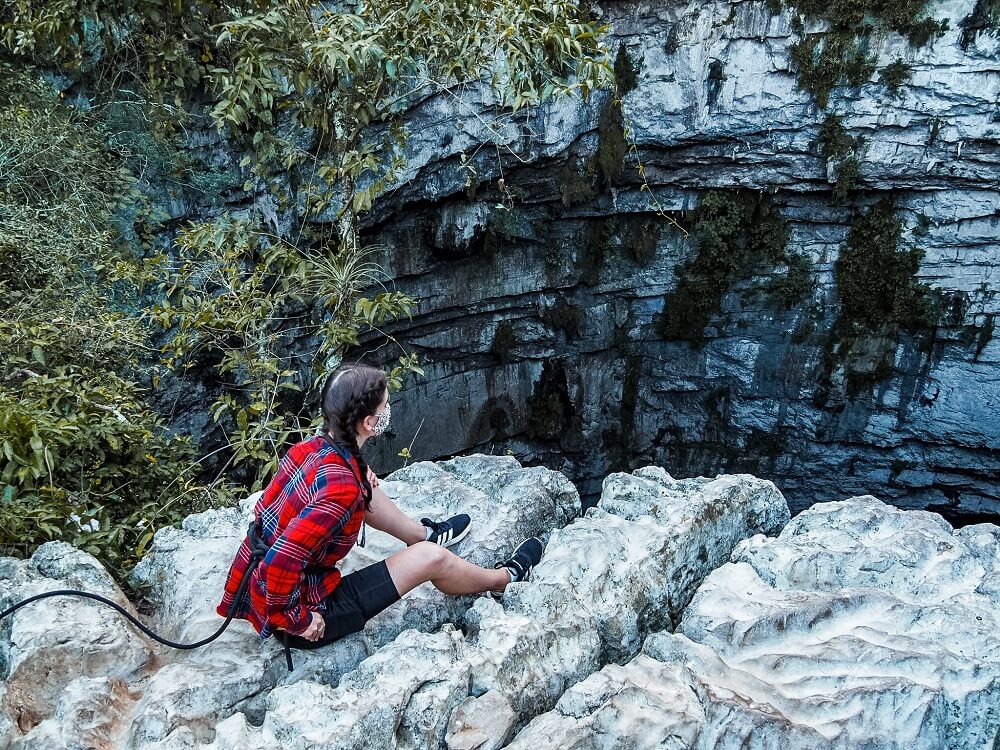
6. Visiting Sotano de las Golondrinas
Not many tours include a visit to the Sotano de las Golondrinas in their Tamul Waterfall itinerary, however the one we took did.
Located just to the northwest of Xilitla is an open-air pit cave called the Cave of Swallows. With a 370m drop from its highest side it’s the second deepest pit in Mexico.
It’s Spanish name means ‘Basement of Swallows’ because of the many birds that live in the cave walls. Interestingly, these birds are actually white-collared swifts and green parrots with no swallows living there.
The reason many people visit the cave shaft is to witness these birds emerging or returning to their nest. Some tours do this early in the morning or in the evening. Regardless of the time of the day, it will be a truly magical spectacle to witness.
There’s only one rule that applies here during your stay: You have to be absolutely silent so you won’t disturb the birds.
For a bit more of an adrenaline rush, you can actually sit at the edge of the pit and peek into the cave with a safety rope tied around your waist. I mean, sitting at the edge of the largest cave shaft in the world whilst witnessing thousands of birds leaving or entering the cave sounds like a great way to finish an adventure filled day don’t you think?
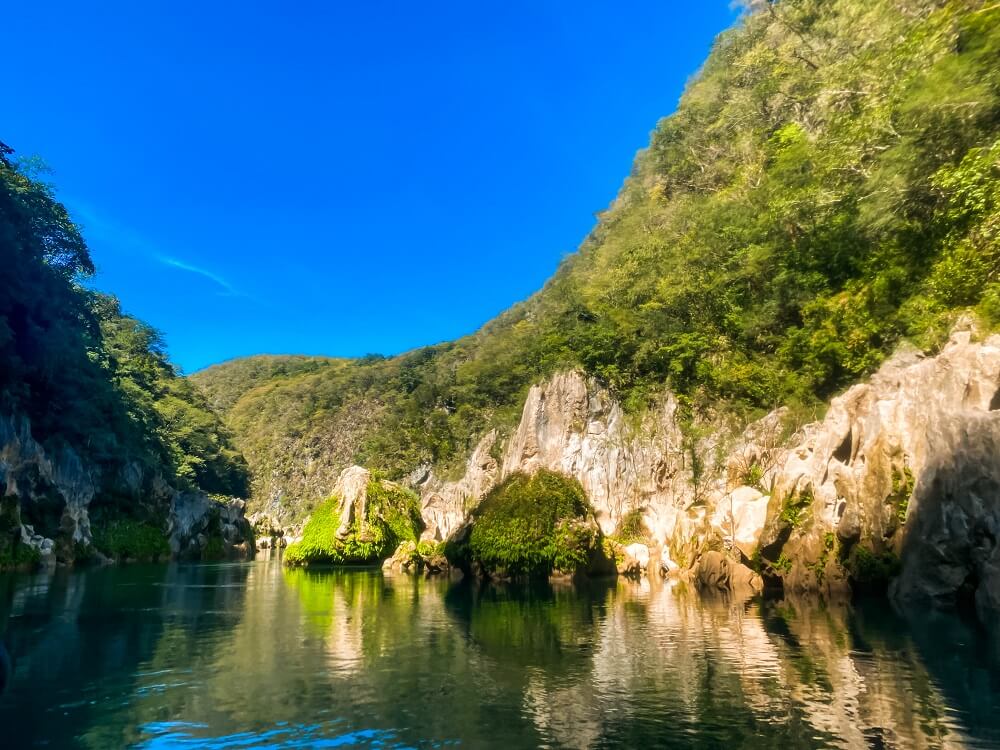
What to Pack to Visit Tamul Waterfall (Cascada de Tamul)
Here’s a list of things you should consider taking with you when you visit Tamul Waterfall:
Items for protection:
- Reef safe sun-cream
- Sunglasses
- Hat
Clothing items:
- Quick-dry towel
- Swimsuit
- Quick dry shorts and top that you don’t mind getting wet
- Change of clothes
- Water shoes
- Comfortable trainers for walking
Tech items:
- Phone
- Waterproof Phone Case
- GoPro with waterproof case
- Dry bag for your tech and other items such as money
Other Items:
- Cash
- Snacks
- Water bottle
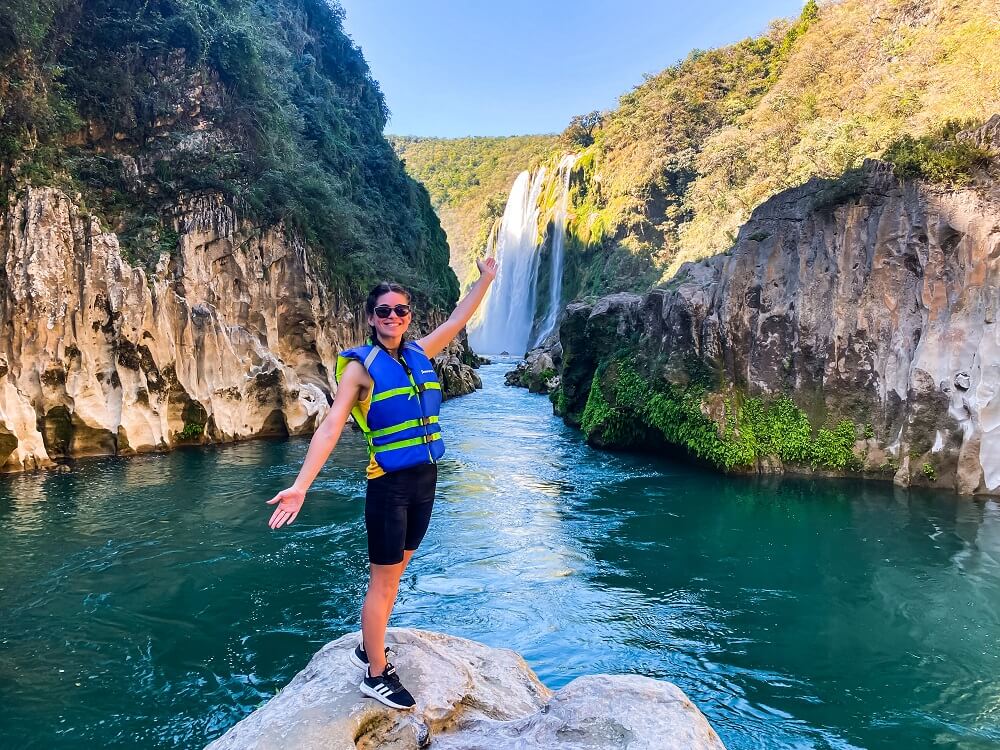
Final Thoughts on Visiting Tamul Waterfall (Cascada de Tamul)
Although I’m personally not a water-sport girl and I normally avoid taking tours I must say I had way more fun than I thought I would. Paddling up the turquoise green river and seeing one of the most spectacular waterfalls in Mexico will always be one of my favourite water-related experiences. In addition, I’ll never forget the beautiful sound of the birds returning to their home.
Have you ever visited Tamul Waterfall or the Huasteca Potosina region before? If so, how much of the area did you manage to explore? If not, would you want to traverse this area now? Let me know in the comments below.
Now, let your adventure begin,

Our Top Travel Resources
Accommodation: For hotels we always use Booking.com and Hostelworld for hostels. We also book longer stays on Airbnb or Vrbo.
Flights: To find the best flight prices we always check Skyscanner, Google Flights or WayAway. Then we also check the airlines’ websites too for comparison.
Car Rentals: We use Discover Cars when we want to rent a car as it compares local, national and international companies.
Activities: If we book organised tours we always check either GetYourGuide or Viator.
Foreign Currency: Whenever we can we prefer to pay in local currency and for that we always use our Wise card. We can easily withdraw money from the ATM or pay by card at most shops and restaurants.
Travel Insurance: We never go anywhere without travel insurance. You never know what will happen on your trip, so good travel insurance like SafetyWing can protect you in case of injury, illness, theft and cancellations.
eSIM and VPN: To get data abroad we use Airalo which is an app that allows you to download a prepaid eSIM to your phone in over 190 countries. Make sure to have a VPN to avoid hackers accessing your personal data when using public WIFI. We use Surfshark which is the only VPN that offers one account on unlimited devices.
Remember…It all starts with a Pin…
